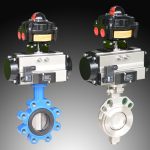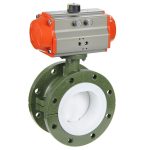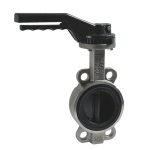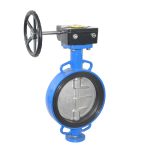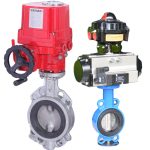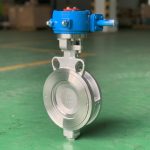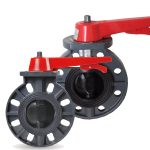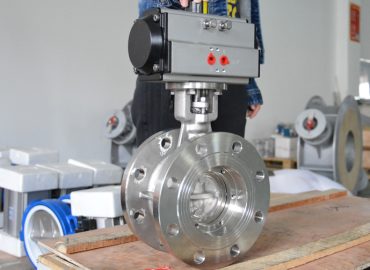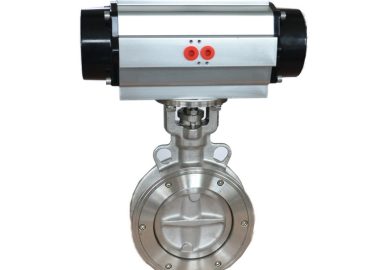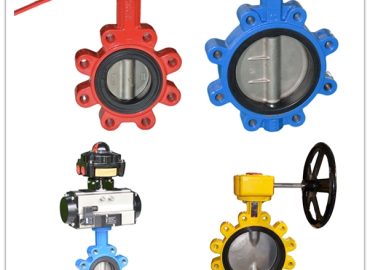Butterfly valve play a crucial role in controlling the flow of liquids and gases across numerous industries, making their selection an important aspect of various applications. Among the factors to consider when choosing a butterfly valve is its weight, which can significantly influence the overall cost. This article will delve into the relationship between the weight of a 150mm butterfly valve and its price, examining the contributing factors such as material composition, design, and shipping costs. By understanding how these elements interplay, buyers can make informed decisions that balance performance, durability, and budget constraints.
Introduction
The weight of a 150mm butterfly valve can have a significant impact on its overall price due to various factors, such as material composition, design, and associated costs like shipping, installation, and maintenance. Butterfly valves are commonly made from materials like cast iron, stainless steel, and bronze, each with distinct properties that affect not only their weight but also their manufacturing cost. For instance, stainless steel valves tend to be lighter and more expensive than cast iron valves due to the higher cost of stainless steel. Moreover, different designs, such as wafer, lug, and flanged, can also contribute to the weight differences and subsequently influence the production complexity and cost. Heavier valves may require more intricate production processes, which in turn can increase the manufacturing expenses. Additionally, the weight of the valve directly affects shipping and handling costs; heavier valves typically incur higher freight charges, thereby raising the overall price. Furthermore, the installation and maintenance of heavier butterfly valves may necessitate additional labor and specialized equipment, leading to increased costs over the valve’s lifecycle. By understanding these factors and their effects on the weight and price of a 150mm butterfly valve, buyers can make informed decisions that take into account the specific requirements of their applications, budget constraints, and long-term operational costs, ultimately striking the right balance between performance, durability, and affordability.
Brief overview of butterfly valves and their applications
Butterfly valves are a widely used type of flow control device, designed to regulate the flow of fluids and gases in various industrial and commercial applications. They consist of a disc mounted on a rotating shaft and function by pivoting the disc either parallel or perpendicular to the flow, allowing for precise control of fluid passage. wafer butterfly valve are valued for their compact design, ease of operation, and cost-effectiveness, making them an ideal choice for numerous applications across industries such as water treatment, oil and gas, chemical processing, and HVAC systems. Their versatility and adaptability to different pressure and temperature conditions further contribute to their popularity, as they can be customized with various materials, sizes, and designs to suit specific requirements and operating environments. Overall, butterfly valves play a vital role in ensuring the efficient and safe management of fluid flow in a wide range of industries and settings.
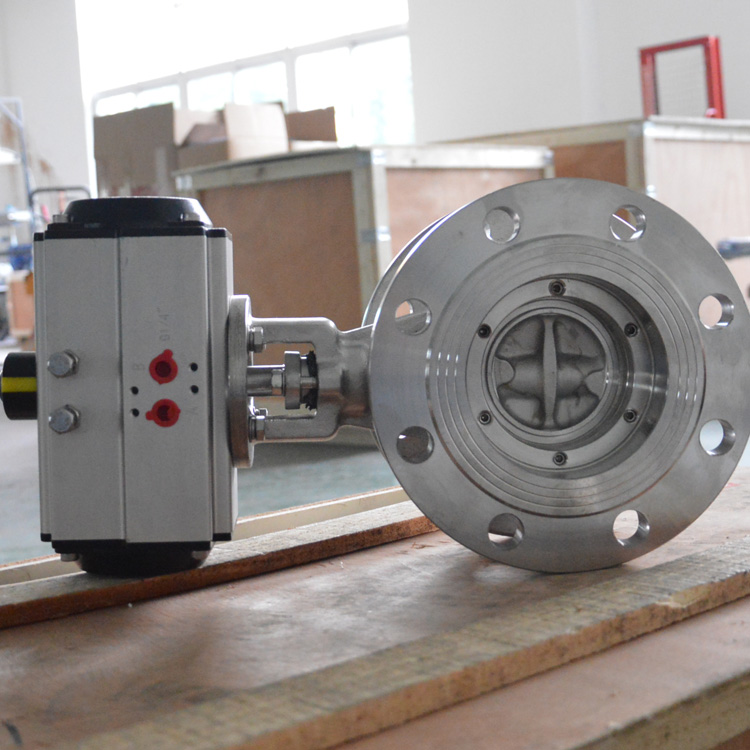
Importance of valve weight in the selection process
The weight of a valve is an important factor to consider during the selection process, as it can have a direct impact on various aspects of valve performance and cost. Heavier valves may require more robust support structures, specialized equipment, and additional labor for installation and maintenance, ultimately contributing to higher overall expenses. Furthermore, the weight of a valve can be indicative of the materials used in its construction, which in turn affects its durability, corrosion resistance, and suitability for specific applications. For instance, lighter materials such as stainless steel offer better corrosion resistance but may come with a higher price tag compared to heavier materials like cast iron. Additionally, valve weight plays a role in shipping and handling costs, with heavier valves typically incurring higher freight charges. By carefully considering the weight of a valve during the selection process, buyers can make informed decisions that strike the right balance between performance, durability, and cost to meet the specific requirements of their applications and operating environments.
Objective of the blog post: Analyze the relationship between the weight of a 150mm butterfly valve and its overall price
The objective of this blog post is to provide a comprehensive analysis of the relationship between the weight of a 150mm butterfly valve and its overall price. By examining the various factors that contribute to the valve’s weight, such as material composition, design, and size, we aim to offer valuable insights into how these aspects can influence the manufacturing, shipping, and maintenance costs associated with butterfly valves. By understanding the interplay of these factors, buyers can make informed decisions when selecting and purchasing butterfly valves that not only meet their specific application requirements but also align with their budget constraints. Ultimately, this blog post seeks to serve as a helpful resource for readers to gain a deeper understanding of the connection between weight and price, enabling them to make well-informed choices that balance performance, durability, and cost.

Factors Influencing the Weight of a 150mm Butterfly Valve
Several factors influence the weight of a lug butterfly valve, playing a critical role in determining its suitability for specific applications and its overall cost. One of the primary factors is the material composition of the valve, as different materials possess distinct properties that affect both their weight and durability. Common materials used in manufacturing butterfly valves include cast iron, stainless steel, and bronze, each offering varying levels of corrosion resistance, strength, and weight. For instance, stainless steel valves are typically lighter and more corrosion-resistant than cast iron valves but may come with a higher price tag due to the increased material costs. Another factor affecting the valve’s weight is its design, with variations such as wafer, lug, and flanged styles contributing differently to the overall weight and functionality. Each design offers unique advantages and drawbacks, making it essential to consider the specific requirements of an application when selecting a valve. Furthermore, the size of the valve plays a crucial role in its weight, with larger valves generally being heavier and more expensive due to the increased material and manufacturing costs. It is important to note that the weight of a butterfly valve can also impact other aspects, such as shipping, handling, and installation expenses, which can further contribute to the overall price. By understanding these factors and their effects on the weight of a butterfly valve, buyers can make informed decisions that take into account the specific needs of their applications, budget limitations, and long-term operational costs, ultimately striking the right balance between performance, durability, and affordability.
Common materials used for butterfly valves (e.g., cast iron, stainless steel, bronze)
Butterfly valves are manufactured using a variety of materials to cater to diverse applications and operating environments, with common choices including cast iron, stainless steel, and bronze. Cast iron is a popular option due to its affordability, durability, and ability to withstand high pressures, making it suitable for applications such as water treatment and irrigation systems. Stainless steel, on the other hand, is favored for its corrosion resistance, strength, and lightweight properties. This material is ideal for use in industries where chemical compatibility and hygiene are essential, such as food processing, pharmaceuticals, and oil and gas. Lastly, bronze butterfly valves offer a balance between cost-effectiveness and corrosion resistance, often used in marine environments and HVAC systems due to their ability to withstand exposure to saltwater and other corrosive elements. By understanding the specific needs of an application and the unique properties of each material, buyers can select the most appropriate butterfly valve to ensure optimal performance, longevity, and cost-efficiency.
How material choice impacts weigh
The choice of material for a electric butterfly valve significantly impacts its weight, as different materials possess unique properties that affect their density and overall mass. For example, cast iron is a heavy and robust material known for its durability and high-pressure resistance; however, its substantial weight can lead to increased shipping, handling, and installation costs. Stainless steel, in contrast, is a lighter material with excellent corrosion resistance and strength, making it ideal for applications where chemical compatibility and hygiene are critical. While stainless steel valves may be more expensive due to the higher cost of the material itself, their lighter weight can offset some of these expenses by reducing shipping and handling costs. Bronze, another common material for butterfly valves, offers a balance between weight and corrosion resistance, suitable for marine and HVAC applications where exposure to corrosive elements is a concern. By carefully considering the weight implications of various material choices, buyers can make informed decisions that take into account the specific requirements of their applications, installation and maintenance costs, and long-term operational efficiency.

Different types of butterfly valve designs (e.g., wafer, lug, flanged)
Butterfly valves come in various designs, each with unique features tailored to specific applications and installation requirements. The three most common designs include wafer, lug, and flanged butterfly valves. Wafer butterfly valve are characterized by their slim profile and lightweight design, making them an ideal choice for space-constrained installations. They are typically sandwiched between two flanges and held in place by bolts, providing a cost-effective solution for low-pressure applications. Lug-style butterfly valves, on the other hand, feature threaded inserts on both sides of the valve body, allowing them to be installed using nuts and bolts without needing additional flanges. This design offers greater flexibility and ease of maintenance, as it enables the removal of downstream piping without disrupting the upstream flow. Flanged butterfly valves have flanges integrated into their design, which are then bolted directly to the connecting pipe flanges. This type of valve is suitable for high-pressure applications and larger pipelines, as the flanged connections provide a more secure and stable seal. By understanding the distinct characteristics of each butterfly valve design, buyers can select the most appropriate option for their specific application, ensuring optimal performance, ease of installation, and long-term reliability.
How design can affect the weight of the valve
The design of a butterfly valve plays a significant role in determining its overall weight, as different designs incorporate varying amounts of material and structural features that contribute to the valve’s mass. For instance, wafer-style butterfly valves are known for their slim profile and lightweight construction, achieved by minimizing the amount of material used in the valve body. This design is ideal for space-constrained installations and applications where reduced weight is beneficial, such as lowering shipping and handling costs. Conversely, lug-style butterfly valves feature threaded inserts on both sides of the valve body, which adds to their weight but provides greater flexibility and ease of maintenance. Lastly, flanged butterfly valves tend to be heavier due to the integrated flanges in their design, which require more material and provide a more secure connection for high-pressure applications. The weight of a valve can impact various aspects, including installation, maintenance, and operational costs, making it essential for buyers to consider how the design of a butterfly valve may affect its overall weight and suitability for their specific application.

Comparison of the weight of various sizes of 150mm butterfly valves
The weight of butterfly valves can vary significantly depending on their size, as larger valves require more material for construction and often feature more robust designs to accommodate increased flow rates and pressures. For example, a smaller butterfly valve, such as one with a 50mm diameter, will typically be much lighter than a valve with a 300mm diameter. This difference in weight not only affects the material and manufacturing costs but also has implications for shipping, handling, and installation expenses. Larger, heavier valves may necessitate additional support structures and specialized equipment for installation, which can further contribute to the overall cost. Additionally, the maintenance and replacement of larger valves can be more complex and labor-intensive due to their increased weight and size. Therefore, when comparing various sizes of butterfly valves, it is crucial for buyers to consider the weight implications and how they may impact the total cost of ownership, from initial purchase and installation to long-term maintenance and operational expenses. By selecting the appropriate valve size that meets the specific requirements of an application while taking into consideration the associated weight factors, buyers can ensure optimal performance and cost-efficiency.
Focus on the 150mm butterfly valve
The 150mm butterfly valve, also known as a 6-inch butterfly valve, is a versatile and commonly used valve size in various industries, offering a balance between flow capacity and ease of installation. This mid-sized valve is suitable for a wide range of applications, including water treatment, chemical processing, and HVAC systems, providing efficient flow control and reliable sealing performance. The weight of a 150mm butterfly valve can vary depending on the material used (such as cast iron, stainless steel, or bronze) and the specific design (wafer, lug, or flanged). Each material and design combination offers unique advantages and trade-offs, making it essential for buyers to consider the specific requirements of their application when selecting a 150mm butterfly valve. For instance, stainless steel valves are lighter and more corrosion-resistant than cast iron valves but may come at a higher cost due to the increased material expenses. Additionally, the choice of design, such as wafer or flanged, can impact the weight, installation complexity, and overall cost of the valve. By carefully evaluating the various factors influencing the weight of a 150mm butterfly valve, buyers can make informed decisions that ensure optimal performance, durability, and cost-efficiency for their specific application.
Relationship Between 150mm Butterfly Valve Weight and Price
The relationship between butterfly valve weight and price is a multifaceted one, influenced by various factors such as material choice, design, size, and manufacturing processes. Generally speaking, heavier valves require more material for construction, which can contribute to a higher overall cost. For instance, cast iron valves are typically heavier than their stainless steel or bronze counterparts, resulting in increased material costs. However, it is essential to note that the price of the raw materials themselves also plays a significant role, with materials like stainless steel often being more expensive than cast iron, despite their lighter weight.Design is another factor that can affect both the weight and price of a butterfly valve. Different designs, such as wafer, lug, or flanged, utilize varying amounts of material and may require additional components or features that impact their overall weight and cost. For example, flanged butterfly valves tend to be heavier and more expensive due to the integrated flanges, which require extra material and provide a more secure connection for high-pressure applications.
Valve size is yet another factor that influences the weight and price relationship. Larger valves necessitate additional material and often feature more robust designs to accommodate increased flow rates and pressures, which can result in higher costs. Moreover, larger, heavier valves may require specialized equipment for installation and additional support structures, further contributing to the overall expenses.Manufacturing processes and quality standards can also impact the weight and price of butterfly valves. Advanced manufacturing techniques and stringent quality control measures can result in higher production costs but may offer superior performance, durability, and reliability. In contrast, lower-quality valves may be cheaper but could have a shorter lifespan and require more frequent maintenance or replacement, ultimately affecting the total cost of ownership.
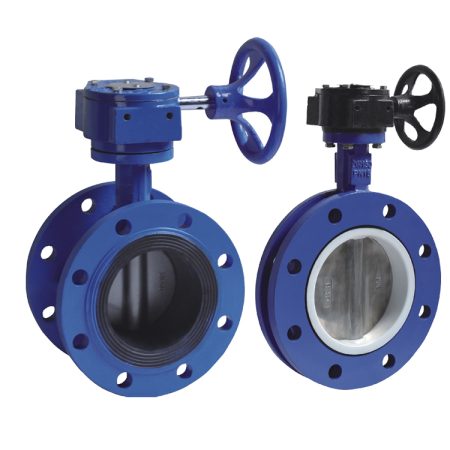
In conclusion, the relationship between butterfly valve weight and price is complex and influenced by several interrelated factors. Buyers must carefully consider the specific requirements of their application, taking into account factors such as material choice, design, size, and manufacturing quality, to select a valve that offers the optimal balance between weight, performance, and cost-efficiency. By weighing these factors and making informed decisions, buyers can ensure they are investing in a butterfly valve that will provide reliable and long-lasting service while minimizing overall expenses.
How the choice of material affects the cost of manufacturing
The choice of material for manufacturing a product, such as a butterfly valve, has a significant impact on the overall production cost due to various factors, including raw material prices, processing requirements, and material properties. Different materials, such as cast iron, stainless steel, or bronze, come with varying price points, which directly affect the cost of manufacturing. For instance, stainless steel is generally more expensive than cast iron, leading to higher material costs. Additionally, some materials may require specialized processing techniques or equipment, which can further contribute to increased production expenses. Material properties, such as corrosion resistance, strength, and durability, also play a role in manufacturing costs, as these characteristics can influence the required thickness, design, and finishing processes of a product. For example, a material with superior corrosion resistance may allow for a thinner valve body, reducing the amount of material needed and, consequently, lowering production costs. Conversely, materials with lower corrosion resistance may necessitate additional protective coatings or treatments, increasing manufacturing expenses. By carefully considering the impact of material choice on manufacturing costs, manufacturers can optimize their production processes and buyers can make informed decisions that balance performance, durability, and cost-efficiency.
Higher material cost often leads to a higher overall price
Higher material costs often lead to a higher overall price for products, as the cost of raw materials constitutes a significant portion of the total production expenses. When manufacturers use more expensive materials, such as stainless steel or bronze, in comparison to more affordable alternatives like cast iron, the increased material costs are typically passed on to the buyer in the form of higher product prices. This correlation between material costs and overall price is not only observed in the initial purchase price but can also have implications for long-term operational expenses, such as maintenance, repairs, and replacement. While products made from higher-cost materials may come with a larger upfront investment, they often offer superior performance, durability, and longevity, potentially resulting in lower total cost of ownership in the long run. Therefore, it is essential for buyers to carefully consider the relationship between material costs and overall price when selecting products, weighing the benefits of improved quality and performance against the potential for increased initial and ongoing expenses.
Heavier valves may require more complex production processes
Heavier valves, such as those used in larger-scale or high-pressure applications, may require more complex production processes due to the increased amount of material, intricate design features, and the need for enhanced strength and durability. The manufacturing of these heavier valves often involves additional steps, such as casting or forging of thicker valve bodies, precise machining of components, and the integration of robust sealing mechanisms to ensure reliable performance under demanding conditions. These specialized processes and techniques can contribute to higher production costs, as they necessitate the use of advanced equipment, skilled labor, and longer production times. Furthermore, quality control measures for heavier valves may be more stringent, ensuring that the valves meet the required standards for safety, reliability, and longevity, which can also add to the overall production expenses. As a result, the increased complexity of production processes for heavier valves can impact their final cost, making it crucial for buyers to consider the implications of valve weight on both initial purchase price and long-term operational expenses when selecting the appropriate valve for their specific application.
Increased production complexity can contribute to higher costs
Increased production complexity, stemming from factors such as intricate design features, specialized materials, and advanced manufacturing techniques, can contribute to higher costs for products like butterfly valves. Complex production processes often necessitate the use of sophisticated equipment, skilled labor, and extended production times, all of which can increase overall manufacturing expenses. Additionally, when dealing with intricate designs or specialized materials, there may be a higher likelihood of production errors or defects, leading to increased quality control measures and potential rework or waste of materials. Moreover, complex production processes can also require more energy and resources, further adding to the overall cost. As a result, products that involve increased production complexity typically come with a higher price tag. However, it is important for buyers to consider the potential benefits associated with these more complex products, such as improved performance, enhanced durability, and longer service life, which may offset the initial higher costs in the long run by reducing maintenance, repair, and replacement expenses. By carefully evaluating the relationship between production complexity and cost, buyers can make informed decisions that balance initial investment with long-term value and operational efficiency.

Heavier valves may incur higher shipping and handling costs
Heavier valves, such as large butterfly valves or those made from denser materials like cast iron, may incur higher shipping and handling costs due to their increased weight. Transporting heavier products typically requires more fuel, specialized vehicles, or additional equipment, such as cranes or forklifts, which can contribute to increased freight expenses. Additionally, the packaging materials and methods required to protect heavier valves during transit may be more robust and costly, further adding to the overall shipping expenses. Handling these heavier valves during installation or maintenance may also necessitate specialized tools, equipment, or skilled labor, leading to higher costs for buyers in terms of labor and resources. As a result, it is essential for buyers to consider the potential impact of valve weight on shipping and handling costs when selecting a suitable product for their specific application. By carefully evaluating these factors alongside other considerations, such as material choice, design, and performance requirements, buyers can make informed decisions that optimize the balance between initial investment, operational efficiency, and long-term value.
How additional shipping fees can impact the overall price of the valve
Additional shipping fees can significantly impact the overall price of a valve, as they add to the total cost incurred by the buyer. Factors such as valve weight, dimensions, packaging requirements, and distance to the destination can all influence the shipping costs. For heavier or bulkier valves, the increased freight expenses may result from the need for specialized transportation vehicles, more fuel consumption, or the use of additional equipment for loading and unloading. Furthermore, robust packaging materials and methods may be required to protect the valve during transit, adding to the overall shipping expenses. These added costs can make the valve less competitive in terms of pricing, especially when compared to similar products with lower shipping fees. Consequently, it is essential for buyers to carefully consider the potential impact of shipping fees on the overall price of the valve when evaluating different options. By taking these additional costs into account, buyers can make informed decisions that balance initial investment, operational efficiency, and long-term value, ultimately selecting a valve that best meets their specific application requirements and budget constraints.
Heavier valves may require additional labor and equipment for installation and maintenance
Heavier valves, such as large industrial butterfly valves or those made from dense materials, may require additional labor and equipment for installation and maintenance due to their increased weight and size. The handling of these hefty valves often necessitates specialized tools, lifting equipment, or even cranes, which can add to the overall cost of installation and ongoing maintenance tasks. Additionally, skilled labor with expertise in handling and installing heavy valves may be required, further increasing labor expenses. These factors can contribute to higher operational costs for the end-user, as they must invest in the necessary resources and personnel to safely and effectively manage the installation and maintenance of heavier valves. It is essential for buyers to consider the potential impact of valve weight on labor and equipment requirements when selecting a suitable product for their specific application. By carefully evaluating these factors alongside other considerations, such as material choice, design, and performance requirements, buyers can make informed decisions that optimize the balance between initial investment, operational efficiency, and long-term value.
Increased labor and equipment costs can contribute to a higher overall price
Increased labor and equipment costs can contribute to a higher overall price for products like industrial valves, as these expenses are often factored into the final cost borne by the buyer. The need for skilled labor, specialized tools, and additional equipment during the manufacturing, installation, and maintenance phases can raise the overall expenses associated with a particular product. For instance, intricate designs or heavy valve components may necessitate the use of advanced machinery or highly trained personnel, which can increase production and operational costs. Furthermore, when more labor-intensive or equipment-dependent processes are required, the time taken to complete tasks such as installation or repairs may be longer, leading to increased labor hours and potential downtime for the end-user. As a result, it is crucial for buyers to consider the potential impact of labor and equipment costs on the overall price of a product when evaluating different options. By taking these factors into account, along with material choice, design, and performance requirements, buyers can make informed decisions that strike a balance between initial investment, operational efficiency, and long-term value.
Considerations When Selecting a 150mm Butterfly Valve
When selecting a butterfly valve for a specific application, it is crucial to consider a range of factors that can impact its performance, longevity, and overall cost. First and foremost, the type of fluid or gas being controlled, as well as its temperature and pressure, should be taken into account, as these factors will influence the choice of materials and design features required for the valve to function effectively and safely. For instance, corrosive or abrasive media may necessitate the use of corrosion-resistant materials like stainless steel or specialized coatings, while high-pressure applications may require a more robust valve body and sealing mechanism.Another important consideration is the desired flow control characteristics, such as the degree of precision in regulating the flow or the need for tight shutoff capabilities. Different butterfly valve designs, such as concentric, double eccentric, or triple eccentric, offer varying levels of control and sealing performance, making it essential to select the appropriate design for the intended application. Additionally, the type of actuation mechanism – whether manual, electric, pneumatic, or hydraulic – should be considered, as this will impact the ease of operation, automation capabilities, and responsiveness of the valve.
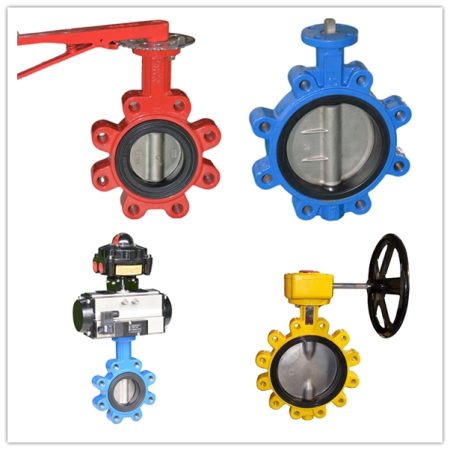
The installation environment and space constraints should also be taken into account when selecting a butterfly valve. Factors such as available space, pipe size, and orientation, as well as potential exposure to harsh environmental conditions, can influence the choice of valve size, body style, and material selection. Furthermore, it is essential to consider the potential impact of valve weight on shipping, handling, installation, and maintenance costs, as heavier valves may require specialized equipment, skilled labor, and increased freight expenses.Lastly, the long-term operational efficiency and total cost of ownership should be evaluated when selecting a butterfly valve. This includes not only the initial purchase price but also the ongoing expenses associated with maintenance, repairs, and replacement over the valve’s service life. By carefully considering all of these factors, buyers can make informed decisions that optimize the balance between initial investment, operational efficiency, and long-term value, ultimately selecting a butterfly valve that best meets their specific application requirements and budget constraints.
Assessing the specific needs of the application (e.g., pressure rating, temperature range, corrosion resistance)
Assessing the specific needs of the application is a critical aspect when selecting a suitable valve, as it ensures optimal performance and longevity. Factors such as pressure rating, temperature range, and corrosion resistance play a significant role in determining the appropriate valve type, material, and design features. Understanding the pressure requirements of the system helps in choosing a valve that can withstand the operational pressures without compromising safety or performance. Similarly, considering the temperature range of the fluid or gas being controlled enables the selection of a valve with materials and sealing mechanisms capable of withstanding thermal expansion, contraction, or potential damage due to extreme temperatures. Furthermore, evaluating the need for corrosion resistance is essential, especially when dealing with corrosive or abrasive media, as this determines the choice of materials or coatings required to protect the valve from premature wear or failure. By thoroughly assessing the specific needs of the application, buyers can make informed decisions that ensure the selected valve meets the required performance criteria while offering long-term reliability and value.
Balancing weight and material considerations with application requirements
Balancing weight and material considerations with application requirements is a crucial aspect when selecting the appropriate valve, as it ensures optimal performance while minimizing potential drawbacks associated with heavier or more expensive materials. The choice of materials can significantly impact the valve’s weight, durability, and corrosion resistance, which in turn affects shipping, handling, installation, and maintenance costs. While heavier or more robust materials may offer increased strength or longevity, they may also require specialized equipment or skilled labor for handling and installation, adding to the overall expenses. On the other hand, lighter materials may be easier to handle and install but may not provide the necessary durability or corrosion resistance for certain applications. Therefore, it is essential to carefully evaluate the specific requirements of the application, such as pressure rating, temperature range, and chemical compatibility, and balance these factors with the weight and material considerations. By doing so, buyers can make informed decisions that strike an optimal balance between performance, reliability, and cost, ultimately selecting a valve that best meets their specific needs and budget constraints.
Evaluating the trade-off between weight, material, and price
Evaluating the trade-off between weight, material, and price is an essential aspect of selecting the appropriate valve, as it enables buyers to make informed decisions that balance performance, durability, and cost. The choice of materials can significantly impact the valve’s weight, which in turn affects shipping, handling, installation, and maintenance expenses. Heavier materials may offer increased strength or corrosion resistance but can also result in higher costs due to the need for specialized equipment or skilled labor for handling and installation. Conversely, lighter materials may be more cost-effective and easier to handle but may not provide the necessary durability or resistance to harsh conditions required for certain applications. Similarly, the price of a valve can be influenced by factors such as material choice, manufacturing processes, and design complexity. By carefully evaluating the trade-offs between weight, material, and price, buyers can strike a balance that optimizes the valve’s performance and longevity while minimizing overall costs. This approach ensures that the selected valve meets the specific application requirements without compromising on quality or placing undue financial strain on the buyer.
How to make informed decisions when working within a budget
When working within a budget, making informed decisions is crucial to ensure that the selected products or services meet the specific requirements without compromising on quality or performance. To achieve this, buyers should first prioritize their needs by determining which factors are essential for their application, such as durability, reliability, and compatibility with the intended system. Next, it is important to conduct thorough research and compare different options available in the market, taking into consideration aspects such as material, design, and brand reputation. This comparison should focus on striking a balance between cost and performance, weighing the trade-offs associated with each option. Additionally, seeking advice from industry experts or consulting with suppliers can provide valuable insights and recommendations tailored to the buyer’s unique needs and budget constraints. Furthermore, exploring alternative solutions, such as refurbished equipment or bulk discounts, can help minimize costs without sacrificing quality. By following these steps and thoroughly evaluating all available options, buyers can make informed decisions that optimize the balance between cost, performance, and long-term value, ultimately selecting products or services that best align with their budget and specific application requirements.
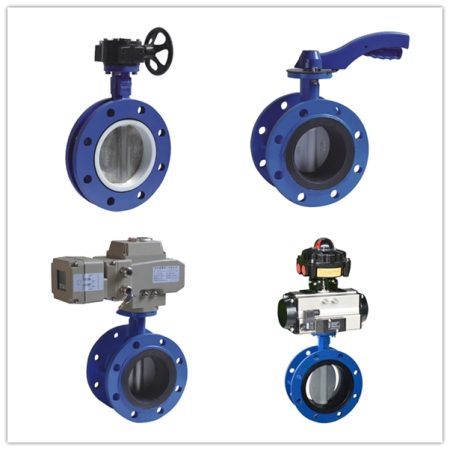
Considering the long-term costs of valve ownership, including maintenance and replacement
Considering the long-term costs of valve ownership is a crucial aspect when selecting the appropriate valve, as it provides a comprehensive understanding of the total expenses associated with its use over its entire service life. This includes not only the initial purchase price but also the ongoing costs of maintenance, repairs, and eventual replacement. Factors such as material choice, design, and quality can significantly impact the frequency and extent of required maintenance, as well as the valve’s overall durability and life expectancy. For instance, valves made from corrosion-resistant materials or featuring advanced sealing mechanisms may require less frequent maintenance and offer longer service life, thereby reducing long-term costs. Additionally, incorporating user-friendly designs or features that facilitate easy inspection, cleaning, or component replacement can further minimize downtime and maintenance expenses. By carefully evaluating these factors and considering the long-term costs of valve ownership, buyers can make informed decisions that optimize the balance between initial investment, operational efficiency, and total cost of ownership, ultimately selecting a valve that best meets their specific application requirements and budget constraints.
Weighing the initial investment against potential future savings
Weighing the initial investment against potential future savings is an essential aspect when selecting a product or service, as it enables buyers to make informed decisions that optimize the balance between upfront costs and long-term value. While a lower initial investment may be appealing, it is crucial to consider the potential impact on operational efficiency, maintenance expenses, and overall durability over time. In some cases, investing in a higher-quality product with a greater upfront cost may result in significant future savings due to reduced maintenance requirements, increased reliability, and longer service life. Conversely, opting for a lower-priced alternative may lead to increased expenses in the long run if frequent repairs, replacements, or reduced efficiency are encountered. By carefully evaluating the trade-offs associated with the initial investment and potential future savings, buyers can make informed decisions that strike an optimal balance between cost and long-term value, ultimately selecting a product or service that best aligns with their specific needs and budget constraints.
Conclusion
In conclusion, making informed decisions when selecting products or services is crucial to ensure optimal performance, durability, and long-term value. This process involves carefully assessing the specific needs of the application, balancing weight and material considerations, evaluating trade-offs between cost and performance, and considering the long-term costs of ownership such as maintenance and replacement expenses. By prioritizing essential factors and conducting thorough research, buyers can compare different options available in the market and weigh the initial investment against potential future savings. Furthermore, seeking advice from industry experts or consulting with suppliers can provide valuable insights and recommendations tailored to the buyer’s unique needs and budget constraints. Additionally, exploring alternative solutions such as refurbished equipment or bulk discounts may help minimize costs without sacrificing quality. Ultimately, by following these steps and thoroughly evaluating all available options, buyers can make informed decisions that strike a balance between cost, performance, and long-term value, selecting products or services that best meet their specific application requirements and budget constraints. This approach not only ensures the successful implementation and operation of the chosen system but also contributes to the overall financial stability and growth of the organization.
Summary of the relationship between the weight of a 150mm butterfly valve and its overall price
In summary, the relationship between the weight of a 150mm butterfly valve and its overall price is an important consideration when selecting the appropriate valve for a specific application. The choice of materials used in the valve’s construction can significantly impact its weight, which in turn affects shipping, handling, installation, and maintenance costs. Heavier valves, often made from more robust materials, may offer increased durability or corrosion resistance but can also result in higher overall expenses due to the need for specialized equipment or skilled labor for handling and installation. Conversely, lighter valves, typically constructed from more cost-effective materials, may be easier to handle and install but may not provide the necessary durability or resistance to harsh conditions required for certain applications. Therefore, it is essential for buyers to carefully evaluate the trade-offs between weight and price, balancing material considerations with the specific requirements of their application to make informed decisions that optimize the valve’s performance, reliability, and cost.
Importance of considering various factors, such as material, design, and application requirements, when selecting a butterfly valve
The importance of considering various factors, such as material, design, and application requirements, when selecting a butterfly valve cannot be overstated, as it ensures that the chosen valve meets the specific demands of the system while offering optimal performance and longevity. Material selection plays a crucial role in determining the valve’s durability, corrosion resistance, and compatibility with the media being handled, directly impacting its overall reliability and maintenance requirements. The valve’s design, including features like sealing mechanisms and actuation options, influences its operational efficiency, ease of maintenance, and suitability for the intended application. Furthermore, understanding the unique application requirements, such as temperature and pressure ratings, flow control needs, and regulatory compliance, is essential to select a valve that seamlessly integrates into the system without compromising on safety or performance. By carefully evaluating these factors and making informed decisions, buyers can ensure that the selected butterfly valve is not only cost-effective but also offers the desired performance, reliability, and service life, ultimately contributing to the success and efficiency of the entire system.
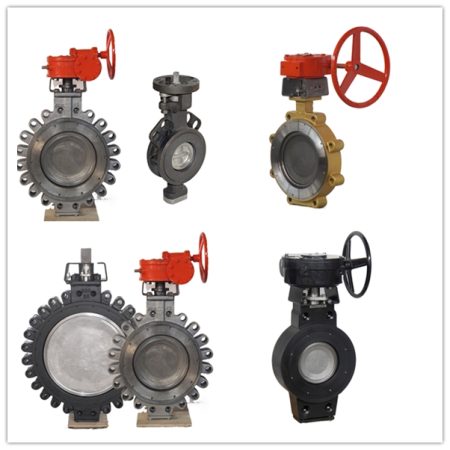
Encouragement for readers to carefully evaluate their needs and budget constraints before making a purchase decision
It is essential for readers to carefully evaluate their needs and budget constraints before making a purchase decision, as this thoughtful approach ensures that the chosen product or service aligns with their specific requirements and offers optimal long-term value. By prioritizing essential factors such as durability, performance, and compatibility with the intended application, buyers can make informed decisions that strike a balance between cost and overall quality. Conducting thorough research, comparing different options available in the market, and seeking advice from industry experts or suppliers can provide valuable insights and recommendations tailored to the buyer’s unique needs and budget constraints. Furthermore, exploring alternative solutions, such as refurbished equipment or bulk discounts, may help minimize costs without sacrificing quality. Ultimately, by carefully evaluating their needs and budget constraints, buyers can confidently make purchase decisions that not only meet their immediate requirements but also contribute to the long-term success and efficiency of their projects or systems.



